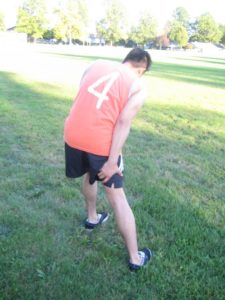The tibia or shinbone is the usual site for fractures. A fracture of the tibial shaft involves a crack or break that arises at any point throughout the tibia. The injury is typically brought about by direct injuries or trauma to the leg linked with falls, contact sports or vehicular accidents.
A tibia fracture is likely to occur among middle-aged and elderly individuals who end up with osteoarthritis of the leg. Some of the usual causes of the injury include direct trauma due to vehicular accidents, contact sports, falls from a great height or physical injuries from assault or gunshot wounds.
Risk factors
Some of the risk factors linked with a tibia fracture include:
- Diminished muscle mass
- Engaging in rough, contact sports such as basketball or football
- Low bone mass due to osteoporosis
- Advancing age
- Excess weight linked with obesity which places increased burden on the joints
Some of the usual causes of the injury include direct trauma due to vehicular accidents, contact sports, falls from a great height or physical injuries from assault or gunshot wounds.
What are the indications of a tibia fracture?
- Sudden and sharp leg pain right after the injury
- Evident deformity of the leg
- Difficulty walking
- Inability to place any weight or pressure on the damaged leg
- Poor range of motion in the ankle or knee
- Excessive pain
- Protrusion of the bone through the skin in some cases
Management
A tibia fracture can be managed conservatively or surgically.
The conservative measures typically include:
- Full immobilization of the affected leg with a cast or splint. Assistive devices such as a walker, cane or walking boot are recommended to lessen any pressure or weight on the bone until it has fully healed while at the same time allowing the individual to engage in some of his/her daily activities.
- Oral pain medications can be given to reduce the pain.
- In some cases, stronger prescription drugs might be given if the over-the-counter variants are not effective in reducing the pain.
- Physical therapy exercises are started after the removal of the cast to strengthen the leg muscles, improve flexibility and lessen the stiffness.
Disclaimer / More Information
The information posted on this page on a tibia fracture is for learning and educational purposes only. To learn how the injury is managed, register for first aid training at one of our training centers located throughout Canada. The training centers are in Edmonton, Calgary, Vancouver, Kelowna, Saskatoon, Victoria, Surrey, Mississauga, Winnipeg, Red Deer, Toronto, Ottawa and Halifax.

